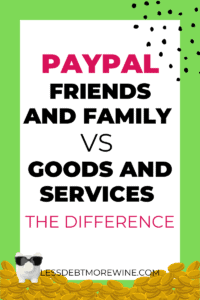Make Money Selling Your Art Online with These 7 Sites
THIS POST MAY CONTAIN AFFILIATE LINKS. MEANING I RECEIVE COMMISSIONS FOR PURCHASES MADE THROUGH THOSE LINKS, AT NO COST TO YOU. PLEASE READ MY DISCLOSURE FOR MORE INFO.
Are you an artist looking for a new way to sell your work? If so, you’re in luck! There are many online marketplaces that make it easy for artists to sell their original art. In this blog post, we will discuss seven of these sites. We will also talk about the benefits of using each site, as well as the membership fees (if any). So whether you’re a painter, sculptor, or photographer, read on to find the perfect site for selling your art online!
By using one of these online art marketplaces, you’re not only saving yourself time and headaches, but you’re not wasting resources either. As many of these marketplaces print on demand, meaning only once a customer orders your product do they create it. As an independent artist and small business, it prevents you from having to source inventory ahead of time.
Steps to Selling Your Art Online
Before you can sell your art online, you need to create an account with the site of your choice. Then, you will need to upload images of your work and provide information about yourself and your artwork. Finally, you will need to set a price and specify how you would like to be paid (e.g., PayPal, check, etc.).
Here are 7 sites where you can profit from your creativity by selling your art.
1. RedBubble
Redbubble allows you to upload your designs and choose from a variety of products (70+), from t-shirts to coffee mugs you would like your original artwork to be sold on. If you prefer more traditional items you can also choose art prints and canvas prints.
You also get to set the price to determine your margin for profit.
You don’t make as much as you would on Etsy, but you also aren’t out the costs of the products and don’t have to worry about shipping stuff. Bonus? Redbubble also deals with customer service issues.
RedBubble is a site for artists of all kinds to sell their work. There is no membership fee, and artists are paid on demand (via PayPal) for each print that sells.
Benefits:
– No membership fees
– Paid on demand
– Wide variety of products to choose from
– Artists retain full copyright control
– Can set own prices
Drawbacks:
– Margins are lower than on Etsy
– No physical store fronts
learn more about selling your art on RedBubble here
2. Amazon Merch
Merch by Amazon is super user friendly, it allows you to sell your designs on t-shirts. You simply upload your designs, the few I’ve tried I’ve made in Canva . Then you decide the cost of the shirt to determine your margin. Since so many people shop on Amazon it’s a great place to sell your designs.
Even though they started with only the ability to sell your designs on t-shirts, it is Amazon, they’ve now expanded to phone cases, throw pillows, and tote bags too. I wouldn’t be surprised if they expanded to other products in the future.
There is no membership fee, and you are paid on demand (via Amazon payments) for each shirt that sells.
Benefits:
– No membership fees
– Sellers keep full copyright control
– Paid on demand
Drawbacks:
– Shirt prices must meet Amazon’s minimum price
– Designs must be approved by Amazon before going live
– Only sells shirts, tote bags, and phone cases at this time
Get Started with Merch By Amazon
3. Tee Spring
TeeSpring is another site that started out with you selling your designs just on t-shirts, however they expanded to allow you to sell your designs on other products as well. Currently they offer 50+ print on demand products. Most of them apparel of some sort. Some of the other available products include tote bags and mugs.
TeeSpring stands apart for it’s ability to control your store a bit more, like being able to create promo codes, integrating with Google Analytics, and messaging buyers.
To get started designing you first need to set up an account. Then you start by selecting the type of product you’d like to design. You upload your design, make a few other decisions and you are on your way to selling your designs.
Teespring charges no membership fees and pays you on-demand (via PayPal) for each product that sells.
Benefits:
– No membership fee
– Sellers keep full copyright control
– Paid on-demand
Learn more about TeeSprint here
4. CafePress
CafePress allows you to use your images, either photos or ones you’ve created and just like many of the other sites on this list, sell them on a range of products (250+) .
There are no upfront fees, though cafe-press does take a fee. They can either take it out of your royalties or pay a flat fee monthly, quarterly, semi-annually, or annually.
You can also choose if you want to just host your personal store on the site or submit your products to the CafePress marketplace. If you tag your products to be included in the marketplace you’ll earn a 5% commission on those sales.
Royalties are paid on a monthly basis and they offer both digital and physical products.
Benefits:
– No upfront fees
– Sellers keep full copyright control
– Royalty payments are monthly
Drawbacks:
– CafePress takes a fee for each product sold, which can be taken out of royalties or paid as a flat fee
– Royalties are lower than other sites
– No membership fees

5. Society6
If you are looking for a site that will allow you to sell your designs on a variety of products then Society six is the place for you. They offer prints, iPhone cases, iPad skins, tote
bags, rugs, and more.
To get started you first need to create an account. Once becoming a verified member of the site you can sell your artwork as products and prints.
Once you are logged in you then select the product you’d like to sell your design on. You upload your design, make a few other decisions and Society Six takes care of the rest by creating the product and marketing it for you.
Generally speaking, you earn 10% of all sales. The exceptions being art prints, canvas prints, and framed prints where you can set your own markup – allowing you to earn more.
Society6 Stands out in that they don’t take any fees and you don’t have to pay a monthly fee. The commissions you earn (10% in most cases) is what you keep.
Benefits:
– Artists/Sellers keep full copyright control
– Wide variety of products to choose from
– Designs sold on Society six are marketing themselves
Drawbacks:
– No physical store fronts
7. Zazzle
Zazzle sort of provides a middle ground between Etsy and the other sites listed in this article. You can sell your art by uploading your designs and selling on products they produce.
Or you can sell your own products where you deal with the inventory similar to Etsy. Similar to Design By Humans you do have your own store, then when designing you set your own margins.
Benefits:
– Wide variety of products to choose from
– Designs are marketing products for you
Drawbacks:
– No physical store fronts
– Commission on each sale.
Wrapping it Up with a Bow on Top
While Etsy may be the most well known online marketplace, it is far from your only options if you are interested in making extra money as an artist.
Art lovers, know theses sites feature artists like you so you’re more likely to find your ideal customer there. So pick a platform, each trusted by thousands of artists. Start marketing your work and make that money selling your art online!
Frequently Asked Questions
Still have some questions about selling your art online, we’ve answered the most common questions below:
Do you need a license to sell your art?
It depends on the rules in your state, but generally, it’s a good idea to get a business license, it makes it easier to claim art-related expenses on your taxes.
What’s the difference between selling my art and licensing it?
Licensing means that someone else owns the rights to your art. This could mean that you retain ownership of the art, or that you give up certain ownership rights in exchange for royalties.
Can I sell my art without getting a business license?
Yes, but you’ll probably want to get a business license anyway. If you’re self-employed, you might also want to consider registering as an LLC or corporation.
Should You Sell originals or reproductions?
If you’re just starting out, it’s best to focus on selling original works. Reproduction pieces will always be cheaper than originals, but they won’t bring in nearly as much money.
Though the medium you use and how easy it is to generate a reproduction can impact this decision.
Is it worth selling my art at all?
Of course! It’s a great way to build your portfolio and start earning money while you’re still learning the ropes
How do you print art and choose printers?
There are two main types of printing processes used today: offset and digital. Offset printing uses plates to transfer ink onto paper. Digital printing uses lasers to etch designs directly into the paper. Most people think of offset printing as “traditional,” but both methods produce beautiful results.
How do you photograph and scan art?
Photography and scanning are important steps in creating high-quality prints. The process involves taking photos or scans of your artwork, be sure to take photos with good lighting and crop the images to focus on the artwork itself.
How much should I charge for my art?
This varies depending on what type of art you’re selling, as well as many other factors:
- The size of the piece
- The time it took you to create
- The cost of materials used
- Your expertise as an artist.
You can always start out pricing on the lower end and increase your prices as you start getting sales.
How do you market your artwork store?
Marketing your art online is similar to any other business. You need to research keywords related to your products and services, write compelling content, and promote your site through social media.
How do you package and ship art?
The beauty of most of the sites listed in this article is that you won’t need to package and ship your art, unless you’re selling the original pieces. In which case, you’ll need to make sure that your packaging is sturdy enough to protect the work.
Are there any downsides to selling my art online?
While there are no real drawbacks to selling your art online, there are some things to keep in mind. First, if you’re planning on making a living off of your art, you’ll have to invest more time and effort into marketing. Second, you’ll have less control over who buys your art. Third, you may find that it takes longer to sell your art because you don’t have physical stores to visit.
How long does it take to make a sale?
Selling your art takes patience and persistence. Some people find success right away, others don’t until they’ve been working at it for years. A big factor in success is how well you market your artwork.
How do I know if my art is ready to sell?
When you’re first starting out, it can be hard to tell whether or not your work is ready to go. But there are a few signs that will help you figure it out. If you’re selling originals, you want to see consistent sales. If you’re selling reproductions, you want to see steady growth in your following.


